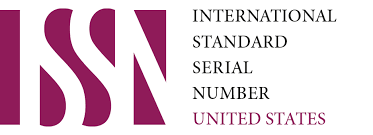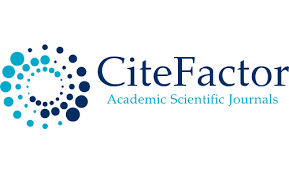Aesthetics Of Ki Hajar Dewantara and Increasing Learning Creativity Traditional Music of Central Java Based On E-Gamelan Independent Learning for High School Students
DOI:
https://doi.org/10.62480/jpip.2024.vol36.pp6-17Keywords:
E-Gamelan, Aesthetics, Ki Hajar DewantaraAbstract
This study aims to describe the aesthetics of Ki Hajar Dewantara in the implementation of Javanese traditional music learning independent learning based on E-Gamelan at SMA Negeri 3 Pekalongan class XI.1 and describe the results of learning assessment in the form of practical tests and non-test-assessment-of-students-consisting-of-assessment: activeness, creativity, and cooperation. With the lack of gamelan equipment in schools, as well as the lack of human resources who teach gamelan, the E-Gamelan application is an effective solution that helps students recognize, appreciate, and understand gamelan music interactively. The use of EGamelan provides a variety of instruments, complexity, and harmony in learning gamelan music. This reflects Ki Hajar Dewantara's aesthetic concept, which appreciates beauty in various forms. By utilizing 5.0 era technology in independent learning to learn traditional Central Javanese music, learners can more deeply understand gamelan music and develop learners' musical skills. The research method used is mixed or combination (mixed method). Data collection techniques used observation, interviews, and documentation. The results showed (1) the beauty of a wide selection of instruments and variations in playing instruments. (2) the concept of complete aesthetics (volledigheid) appears in the variety of instruments provided. (3) the aesthetics of harmony (laras) reflects the concept of fusion and harmony between various instruments in gamelan music. The results of the research, cycle 1 of 34 learners, with 19 people (55.88%) getting sufficient scores (70-79) and 15 people (44.11%) getting fewer scores. In cycle 2 of 34 learners, 7 people (20.58%) got good grades (80-89) and 26 people (76.47%) got sufficient grades (70-79). The number of learners who scored above 70 or complete was 34 with an average of 78. Suggestions to improve the utilization of E-Gamelan in Javanese traditional music education, (1) development of content and application features. (2) teacher and instructor training. (3) integration with conventional learning.
References
Abimanyu, D. E. Y., & Harwanto, D. C. (2019, December 8). Aransemen Lagu "Lelo Ledung"
Menggunakan Idiom-Idiom Pentatonik Gamelan Jawa Pada Piano Solo. 1(2), 87-100.
https://doi.org/10.24036/musikolastika.v1i2.292. Awaliyah, N. A., Widiyawati, Y., & Nurwahidah, I. (2022, September 16). Development of
HOTS Science Test: Ethno-Science Technology Engineering and Mathematics (STEM) based
on Javanese Gamelan. Universitas Negeri Yogyakarta, 6(2), 81-90.
https://doi.org/10.21831/jser.v6i2.51878
Dewantara, K. H. (2004). Karya Ki Hajar Dewantara. Bagian Pertama Pendidikan.
Fuadi, T. M. (2019). Dodaidi: Budaya Mengayunkan Anak dalam Masyarakat Aceh (Perpektif
Filsafat Pendidikan Ki Hadjar Dewantara). Jurnal Pencerahan, 13(1), 79–96.
Jiwandono, M. D., Octavianingrum, D., & Djatmiko, G. (2021). Aplikasi E-Gamelan Sebagai
Alternatif Media Pembelajaran Praktik Karawitan Secara.1–9.
Kavoura, A., & Bitsani, E. (2014). Methodological Considerations for Qualitative
Communication Research. Procedia - Social and Behavioral Sciences, 147, 544–549.
https://doi.org/10.1016/j.sbspro.2014.07.156
Lephen, P. (2023). Pendidikan Karakter Pada Sekolah Dasar Berbasis Estetika Teater
Antonin Artaud (Keresahan Zaman dan Produksi). CES, 564–578.
Lestari, W. (2020). Efektifitas Penggunaan Media Edutainment Di Tengah Pandemi Covid19. AKSIOMA: Jurnal Program Studi Pendidikan Matematika, 9(2), 413–423.
https://doi.org/10.24127/ajpm.v9i2.2783
Manalu, J. B. (2022). Pengembangan Perangkat Pembelajaran Kurikulum Merdeka Belajar.
Mahesa Centre Research, 1(1), 80–86. https://doi.org/10.34007/ppd.v1i1.174
Mudana, I. (2019). Membangun Karakter dalam Perspektif Filsafat Pendidikan Ki Hadjar
Dewantara. Jurnal Filsafat Indonesia, 2(2), 75-81. https://doi.org/10.23887/jfi.v2i2.21285
Marisa, M. (2021). Inovasi Kurikulum "Merdeka Belajar" di Era Society 5.0. Santhet: (Jurnal
Sejarah, Pendidiikan Dan Humaniora), 5(1), 72. https://doi.org/10.36526/js.v3i2.e-ISSN
Rahman, Z. (2021). Metodologi Penelitian Kualitatif Berbasis Blended Learning.
Rini, B. (2022). Merdeka Belajar Dalam Perspektif Ki Hajar Dewantara. Elementa: Jurnal
PGSD STKIP PGRI Banjarmasin, 4(1), 15–25. https://doi.org/10.33654/pgsd
Rahayuningsih, F. (2022). Internalisasi filosofi pendidikan Ki Hajar Dewantara dalam
mewujudkan profil pelajar Pancasila. Social Jurnal Inovasi Pendidikan IPS, 1(3), 177-187.
https://doi.org/10.51878/social.v1i3.925
Rahayu, S. (2019). Estetika Wangsalan dalam Lagu Sindhenan Karawitan Jawa.Gelar Jurnal
Seni Budaya, 16(1). https://doi.org/10.33153/glr.v16i1.2338
Rahayu, S., Rosita, R., Rahayuningsih, Y., Hernawan, A., & Prihantini, P. (2022).
Implementasi Kurikulum Merdeka Belajar di Sekolah Penggerak. Jurnal Basicedu, 6(4),
-6319. https://doi.org/10.31004/basicedu.v6i4.3237
Setyawan, D., & Dopo, F. (2020, September 2). Developing Eastern Culture-Based Arts
Education To Improve Student's National Identity. Knowledge E.
https://doi.org/10.18502/kss.v4i12.7586
Shah, S. M. (2013, October 1). Contextualizing the Transmission of Malaysian Traditional
Music. Elsevier BV, 93, 1000-1004. https://doi.org/10.1016/j.sbspro.2013.09.318
Sugiarta, I., Mardana, I., Adiarta, A., & Artanayasa, W. (2019). Filsafat pendidikan Ki Hajar
Dewantara (tokoh timur). Jurnal Filsafat Indonesia, 2(3), 124-136.
https://doi.org/10.23887/jfi.v2i3.22187
Sumarno. Tejo. (2022). Pengaruh Penggunaan Aplikasi E-Gamelan Terhadap Minat Belajar
Siswa SMP Tunagrahita Ringan Pada Pembelajaran Seni Karawitan di SLB A YKAB Surakarta
Sumarsam. (2003) Gamelan " Interaksi Budaya dan Perkembangan Musikal di Jawa.
Yogyakarta : Pustaka Pelajar Offset
Soeroso. (1993). Bagaimana Bermain Gamelan. Jakarta : Balai Pustaka
Tarigan, M. (2022). Filsafat Pendidikan Ki Hajar Dewantara dan Perkembangan Pendidikan
di Indonesia. Mahaguru: Jurnal Pendidikan Guru Sekolah Dasar, 3(1), 149–159.
Downloads
Published
Issue
Section
License

This work is licensed under a Creative Commons Attribution-NonCommercial 4.0 International License.
User Rights
Under the Creative Commons Attribution-NonCommercial 4.0 International (CC-BY-NC), the author (s) and users are free to share (copy, distribute and transmit the contribution).
Rights of Authors
Authors retain the following rights:
1. Copyright and other proprietary rights relating to the article, such as patent rights,
2. the right to use the substance of the article in future works, including lectures and books,
3. the right to reproduce the article for own purposes, provided the copies are not offered for sale,
4. the right to self-archive the article.












